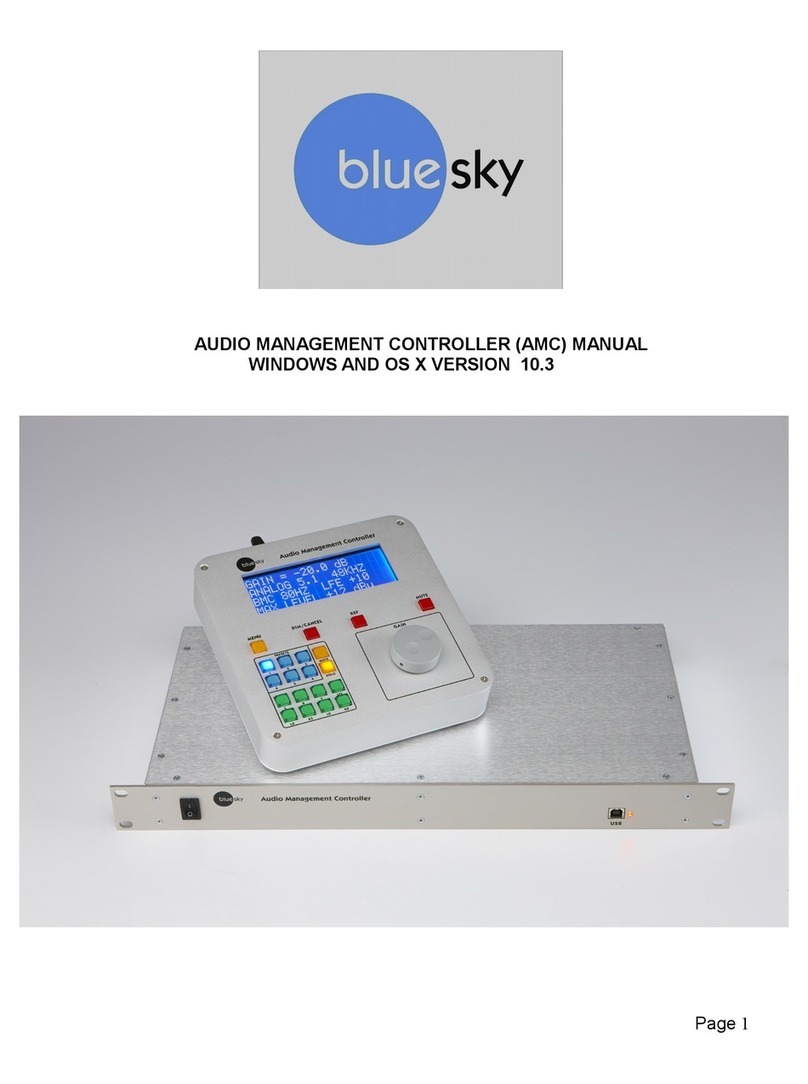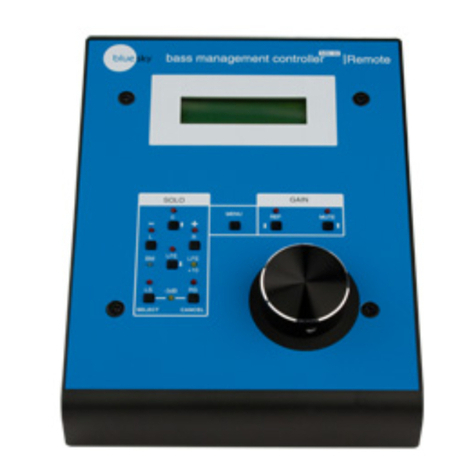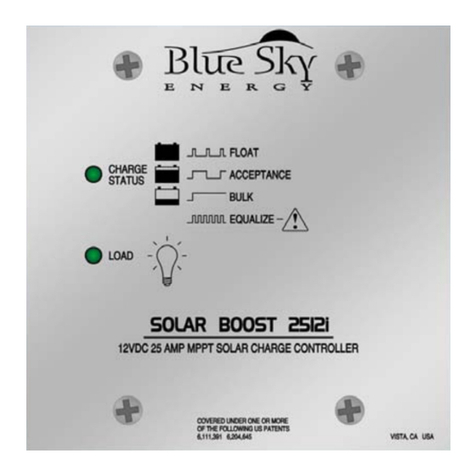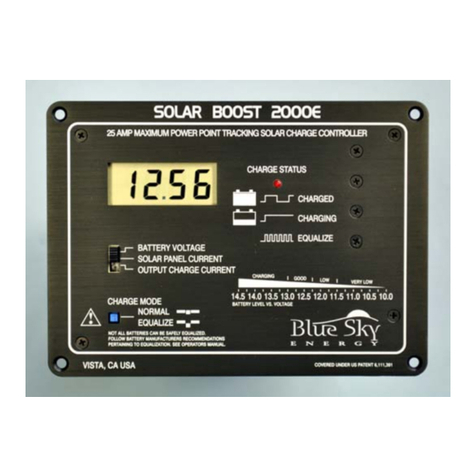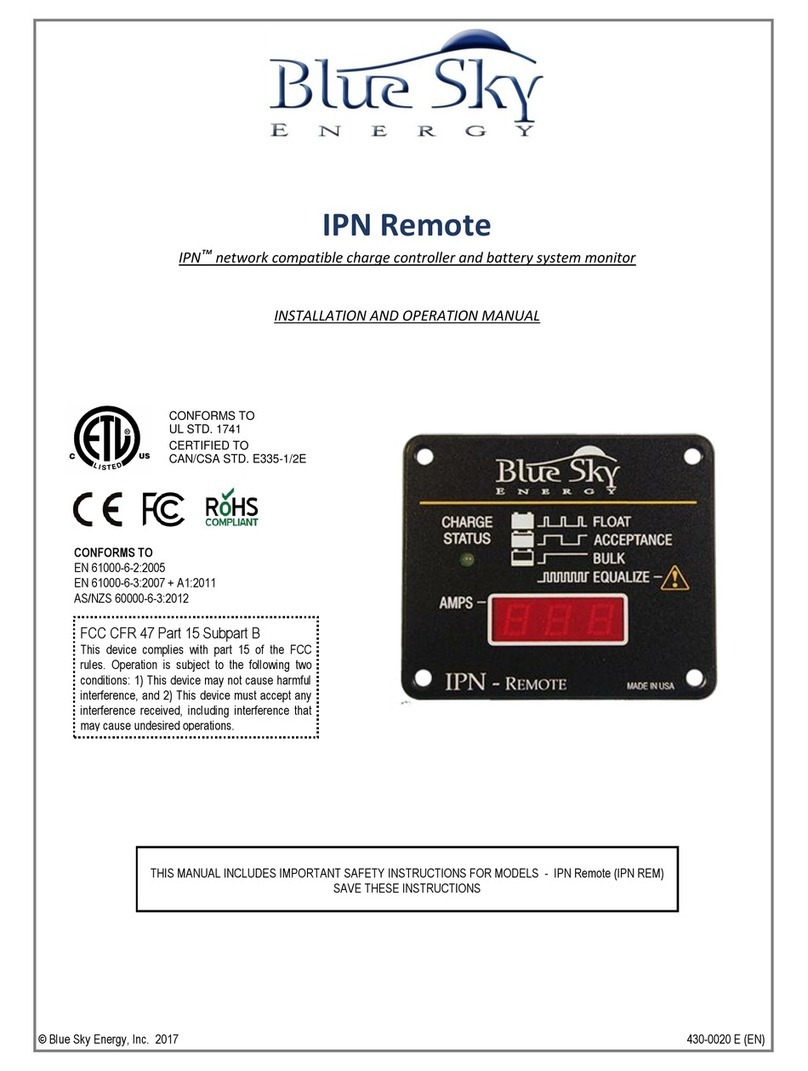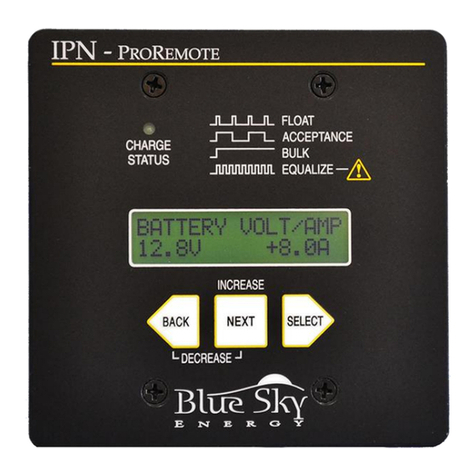Blue Sky Energy –Solar Boost 3000i
1Blue Sky Energy | USA | www.blueskyenergyinc.com
TABLE OF CONTENTS
IMPORTANT SAFETY INSTRUCTIONS .................................................................................................................. 2
PRODUCT DESCRIPTION...................................................................................................................................... 2
Part Numbers and Options................................................................................................................... 3
OPERATION ....................................................................................................................................................... 3
Charge Status Indication ...................................................................................................................... 3
Digital Display....................................................................................................................................... 3
Solar Charge Amp-Hour Counter.......................................................................................................... 3
Battery Level Graphic........................................................................................................................... 4
3-Stage Charge Control ........................................................................................................................ 4
Bulk Charge .................................................................................................................... 4
Absorption Charge.......................................................................................................... 4
Float Charge .....................................................................................................................4
Two Stage Charge Control.................................................................................................................... 5
Output Current Limit............................................................................................................................ 5
Optional Temperature Compensation ................................................................................................. 5
Equalization.......................................................................................................................................... 5
Maximum Setpoint Voltage Limit......................................................................................................... 5
Maximum Power Point Tracking.......................................................................................................... 6
Panel Temperature and Thermal Protection........................................................................................ 6
Multiple Charge Controllers On The IPN Network ............................................................................... 6
INSTALLATION ..................................................................................................................................................... 6
Charge And Load Control Settings........................................................................................................ 6
As Shipped Factory Default Settings............................................................................... 6
Restoring As Shipped Factory Default Settings............................................................... 7
Changing Charge And Load Control Settings .................................................................. 7
Selecting PV Modules........................................................................................................................... 8
Mounting ............................................................................................................................................. 8
Battery and PV Wiring.......................................................................................................................... 9
Optional Battery Temperature Sensor ................................................................................................. 9
Auxiliary Output ...................................................................................................................................10
Auxiliary Battery Charge.................................................................................................10
Load Controller...............................................................................................................10
Dusk–To–Dawn Lighting Control ....................................................................................11
Battery & PV Power Connect/Disconnect Order..................................................................................11
Connecting The Battery..................................................................................................11
Connecting PV Modules .................................................................................................11
Installing A Multi-Controller System Using The IPN Network...............................................................11
Multi-Controller Wiring And Setup.................................................................................12
TROUBLESHOOTING GUIDE ................................................................................................................................12
SPECIFICATIONS ..................................................................................................................................................15
FIVE YEAR LIMITED WARRANTY..........................................................................................................................15
TABLES AND FIGURES
Table 1 Charge Status ................................................................................................................. 3
Table 2 Charge And Load Control Settings.................................................................................. 7
Table 3 Maximum Conductor Pair Length –3% Voltage Drop.................................................... 9
Figure 1 Front Panel Operation & Indicators................................................................................ 4
Figure 2 Factory Charge Voltage Setpoints -vs.- Battery Temperature........................................ 5
Figure 3 Detailed Dimensional Drawing ....................................................................................... 8
Figure 4 Wiring Diagram .............................................................................................................. 9
Figure 5 Auxiliary Output Wiring Diagram....................................................................................10
Figure 6 IPN Network Wiring........................................................................................................12






